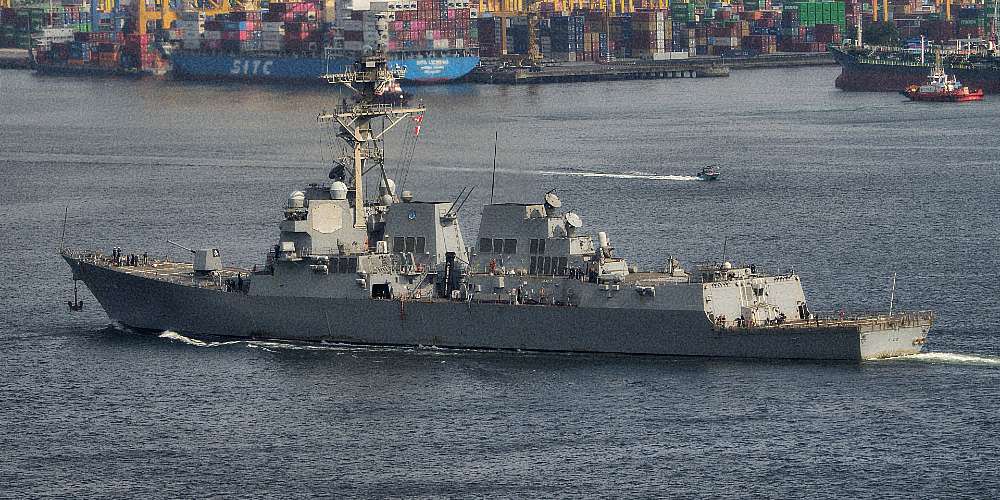(The Epoch Times)—The U.S. Navy on Sept. 19 released a new strategic document centered on countering communist China’s aggression in the Indo-Pacific.
It directs the Navy to develop “readiness for the possibility of war with the People’s Republic of China by 2027,” pointing to China’s preparations for a possible invasion of Taiwan in the same year.
“The Navy emphatically acknowledges the need for a larger, more lethal force,” the document, titled “Navigation Plan for America’s Warfighting Navy,” states.
“By 2027, the Navy will be more ready for sustained combat as part of a Joint and Combined force, prioritizing the People’s Republic of China as the pacing challenge and focusing on enabling the joint warfighting ecosystem.”
The Chinese Communist Party (CCP), which rules China as a single-party state, claims that Taiwan is a part of its territory that must be united with the mainland through any means necessary.
However, Taiwan is self-governed by a democratically elected government and has never been controlled by the CCP.
CCP leader Xi Jinping has nevertheless ordered the communist regime’s military wing to prepare for war and to develop the capabilities required to invade Taiwan.
The regime has since engaged in a more than decade-long shipbuilding spree, massively expanding its fleet, drone capabilities, and nuclear arsenal.
Most importantly, for a Taiwan invasion scenario, it has also launched its own advanced aircraft carriers and destroyers.
That poses a problem for the United States, as the U.S. Navy floats far fewer ships than the Chinese, and must spread them more widely to maintain its global military presence.
China, meanwhile, can position the vast majority of its naval and coast guard units close to home, where they can receive cover from land-based units and where it is easier to maintain their supply lines.
A congressional report published in July found that “the U.S. military lacks both the capabilities and the capacity required to be confident it can deter and prevail in combat” against China.
The July report also said that China is likely to increase its hostile behavior in the coming years to “normalize unlawful behavior” around Taiwan as it seeks to take advantage of the United States’ lack of ability to deter conflict.
Key to the new Navy document’s goals, therefore, is the fulfillment of Project 33, a naval initiative aiming to ready the force by eliminating delays in maintenance, scaling the use of autonomous and robotic systems, and increasing navy recruitment, among other things.
“We cannot manifest a bigger traditional Navy in a few short years, nor will we rely on mass without the right capabilities to win the sea control contest,” the document reads.
“Nearer-term operational challenges demand that we integrate proven robotic and autonomous capabilities as soon as possible.
“We must do so with a focus on how we will use these systems in war. By 2027, we will integrate proven robotic and autonomous systems for routine use by the commanders who will employ them.”
Scaling the deployment of autonomous systems is just part of the puzzle, with the document underscoring that the United States’ grim position in the Indo-Pacific “goes well beyond just the size of the PLA [People’s Liberation Army] Navy fleet.”
The document notes that China’s joint forces are developing into an integrated fighting force “specifically designed to defeat ours” and are backed by China’s massive industrial base.
The document also calls on the Navy to work with Congress to secure critical supply chains and lays out a vision in which all fleet headquarters in the service will field their own maritime operations centers.
The goal of the latter directive is to ensure that the U.S. Navy can continue to maintain superiority in command and control, military intelligence, and maneuvers, even against a numerically superior foe in a vast and distributed region.
“We must meet all the objectives in this Navigation Plan to field the people and capabilities needed to fight and win today, in 2027, and beyond,” the document states.
What Would You Do If Pharmacies Couldn’t Provide You With Crucial Medications or Antibiotics?
The medication supply chain from China and India is more fragile than ever since Covid. The US is not equipped to handle our pharmaceutical needs. We’ve already seen shortages with antibiotics and other medications in recent months and pharmaceutical challenges are becoming more frequent today.
Our partners at Jase Medical offer a simple solution for Americans to be prepared in case things go south. Their “Jase Case” gives Americans emergency antibiotics they can store away while their “Jase Daily” offers a wide array of prescription drugs to treat the ailments most common to Americans.
They do this through a process that embraces medical freedom. Their secure online form allows board-certified physicians to prescribe the needed drugs. They are then delivered directly to the customer from their pharmacy network. The physicians are available to answer treatment related questions.



